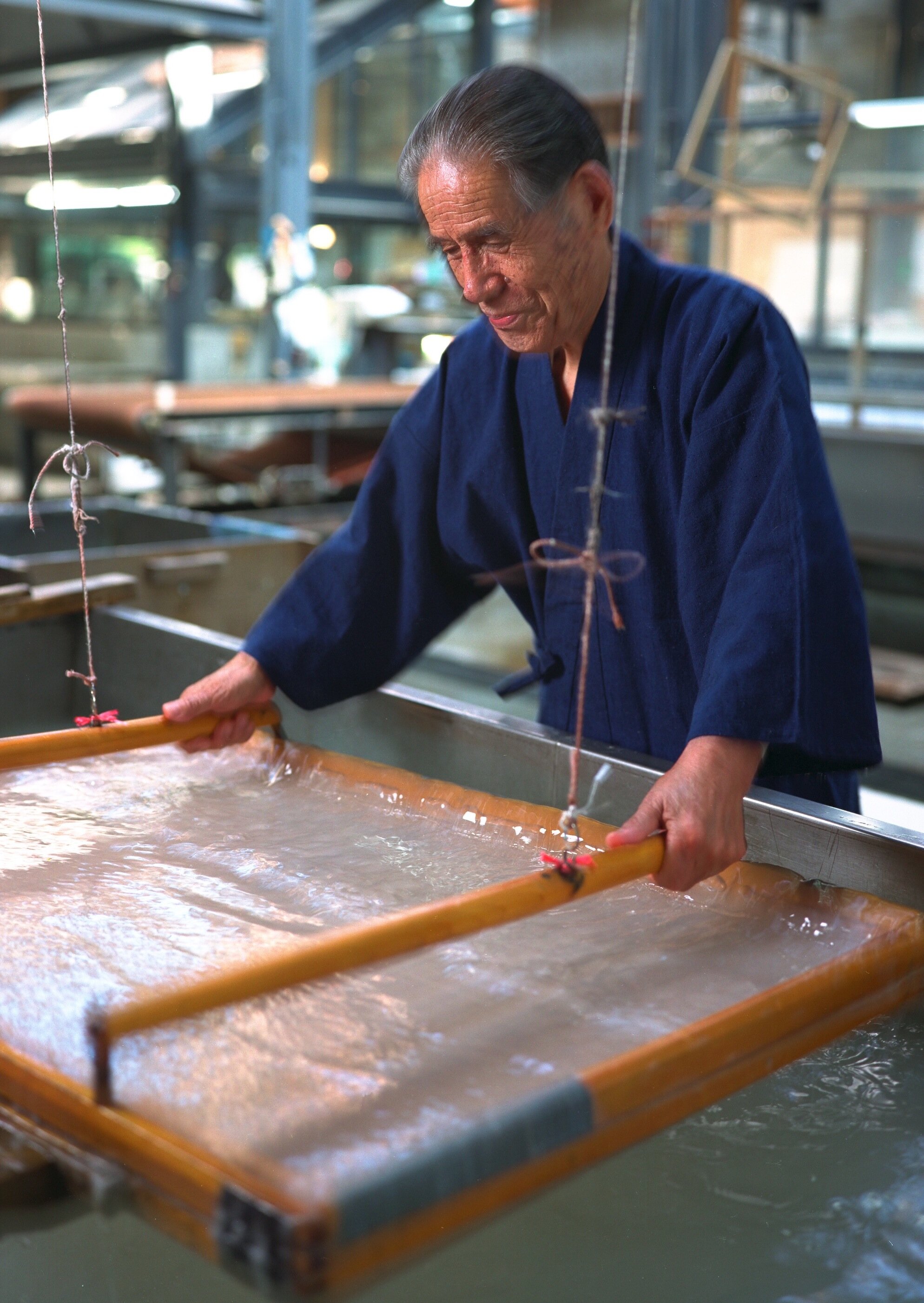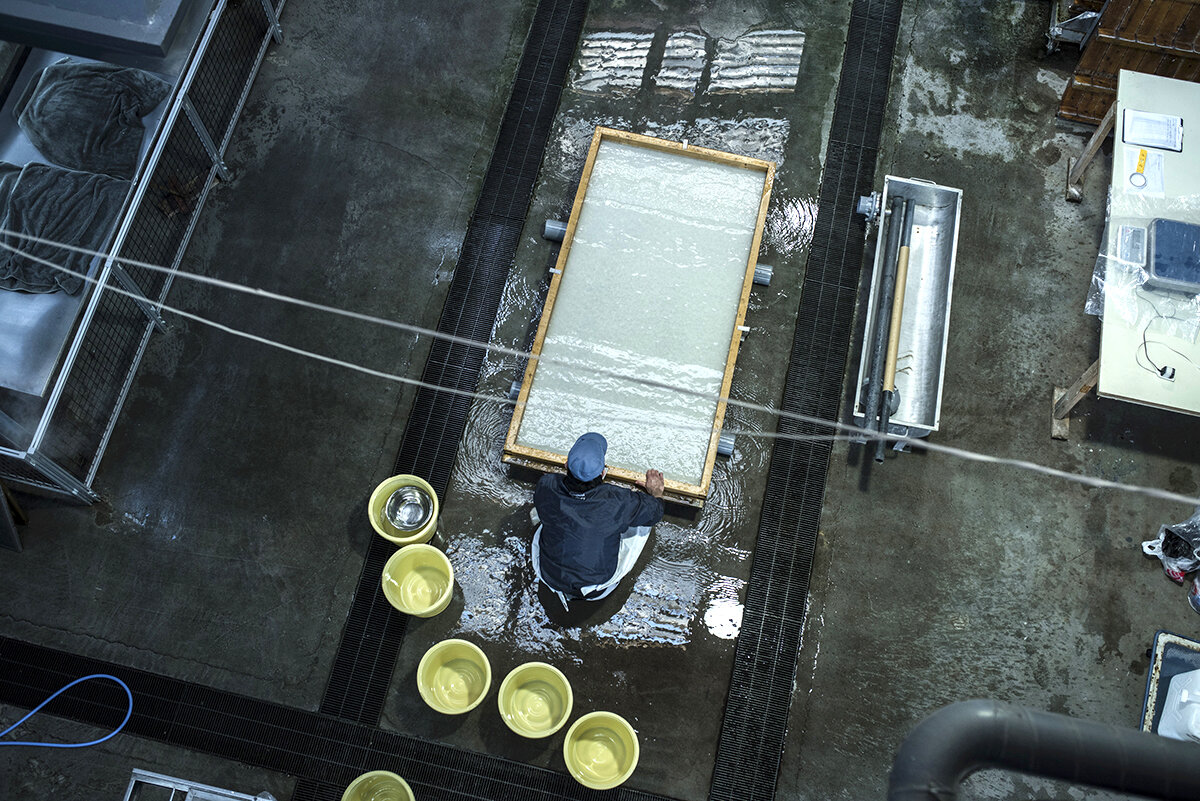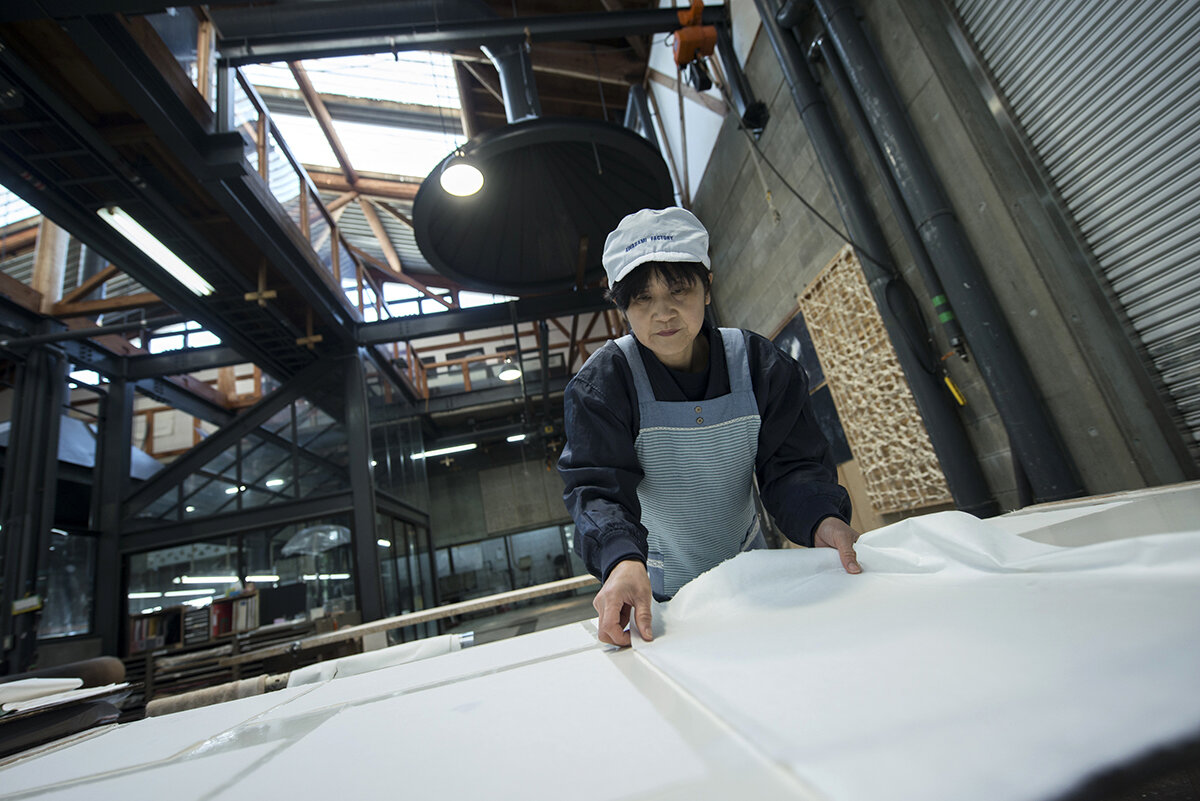MAKING OF: Japanese Paper or Washi.
While we all continue to ‘stay local’ and ‘stay home’, we imagine ourselves visiting Tokushima, Japan and taking a tour of the Awagami Paper Mill…
We have been printing exclusively with Japanese washi papers from the Awagami Factory in Tokushima for 5 years now. And yet, to put into words why these papers are so special is hard. Because, in many ways, the experience of working with these papers lies in our fingertips more so than our minds. Touching, feeling, lifting, rubbing, rolling … using these papers has become a part of our daily working life.
These washi papers are soft and yet textured, delicate and yet strong, natural and yet partly translucent. Over time washi papers feel almost closer in quality to fabric than the crinkly bleached papers that mostly surround us all in our daily lives.
Washi papers bring so much to the process of our block printmaking. Now, we can’t imagine working with anything else.
Recently were talking with Craig at the Awagami paper mill. We asked him if it could share some more about Japanese washi papers and specifically the Awagami factory with our readers. And, thankfully, he said yes of course…
Here are 5 important things to know about Japanese washi papers and the Awagami factory…
1. Washi is made from Kozo Fibres which is a highly sustainable plant resource.
Japanese washi is made from renewable plant resources that grow to maturity in 1-2 years. When you compare this to wood-based papers (that take dozens of years to mature and require many chemicals), washi is created with significantly less harm to the environment. The kozo fibre used in the Awagami Factory grows on the mountainside adjacent to the mill and is typically harvested during winter.
2. The Nagashizuki method, developed by Japanese papermakers produces stronger, thinner and semi-translucent papers.
Early Japanese papermakers astutely noticed that paper pulps with gampi fibres had a slower drainage rate. And slower drainage allowed the papermakers to repeatedly move the pulp mixture back and forth over the paper mould’s surface. The reason this is important is that the result was a stronger paper with more evenly intertwined fibres.
Initially, a set back for Japanese papermakers was the fact that the gampi fibres are not cultivatable. So, they had to adapt and began to extract the key viscous material (neri) from more readily available plants. This lead to the development of the Nagashizuki style of papermaking.
The Nagashizuki process yields the strong, thin and semi-translucent papers that have become synonymous with washi and sets these papers apart from traditional western papers.
3. Made by hand
The Nagashizuki method requires the fibre mixture to be in constant motion over the surface of the screen. The actual motion involved varies according to the kind of fibre used, paper to be made and the individual papermaker. It’s said that on the average a single sheet of paper takes one minute to complete.
Once the basic actions are mastered, improvement comes with the elimination of all unnecessary or wasted movements.
In the past, the finished papers were then cut by hand into specific sizes and also to remove the deckled edges. Nowadays the deckled edges are maintained as an indication of its hand-making.
4. Special Tools
While the fundamental tools required to create Japanese and Western papers are basically the same there are some key differences. In Japanese paper making the pulp vat or sukibune is traditionally made from pine or cypress (with contemporary versions lined in stainless steel). The sukibune holds the fiber-neri-water mixture and has several attachments making it different from a Western vat.
But the major difference between Japanese and Western moulds is Western moulds have a removable deckle with an attached rigid screen while Japanese mould and deckles are actually hinged together with a flexible/removable screen.
5. Master Craftsmen and 7 generations of the Fujimori family in Tokushima
Seven generations of the Fujimori family have run the Awagami washi paper making business.
In 1945, Minoru Fujimori (the 6th generation) took over the family factory. He was determined to continue washi paper making despite post-WWII difficulties. In 1970, Minoru-san was designated as an ‘Intangible Cultural Property of Tokushima’ in recognition of his skills. In 1976, Awagami washi was designated as a ‘Traditional Craft Industry’ and in 1986, Minoru Fujimori was further honoured as Master Craftsman and awarded the ‘Sixth Class Order of Merit, Sacred Treasure’ by the Emperor. Currently his son, Yoichi and family continue the papermaking tradition as their ancestors did before them.








